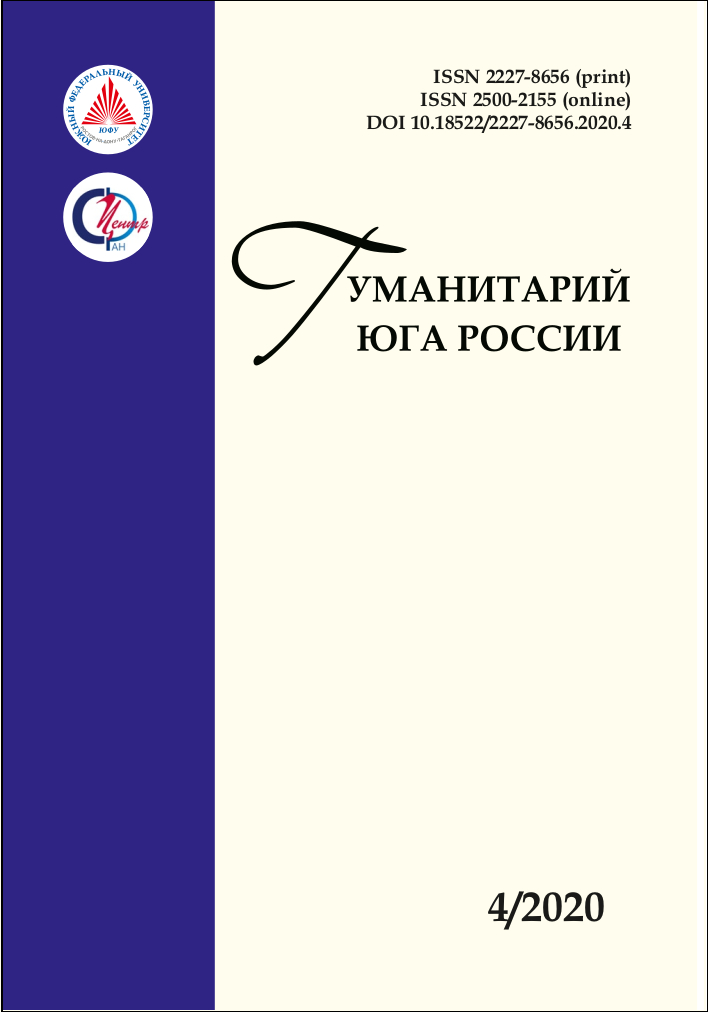Особенности внутрирегиональных миграционных потоков мужчин и женщин в Ростовской области
Научная статья
Аннотация
Литература
Бадараева Р.В., Цыбикова А.А. Теоретические основы миграции: сущность и классификация // Современные научные исследования и разработки. 2018. № 10 (27). С. 143–145.
Верещагин И.Ф. Долговременные факторы внутрирегиональной миграции на территории Архангельской области в XX веке // Вестник Северного (Арктического) федерального университета. Гуманитарные и социальные науки. 2015. № 1. С. 5-14.
Гайнанов Д.А., Уляева А.Г. Внутрирегиональная миграция как фактор усиления агломерационных процессов // Научное обозрение. Экономические науки. 2017. № 5. С. 5–13.
Доброхлеб В.Г. Гендерный аспект демографической динамики современной России // Миграция как ресурс социально-экономического и демографического развития : сб. ст. / под ред. С.В. Рязанцева, М.Н. Храмовой, А.С. Максимовой. М., 2019. С. 234–237.
Кретова О.Г., Попкова Л.И. Территориальная дифференциация миграционной подвижности населения Курской области // Вестник Воронежского государственного университета. География. Геоэкология. 2014. № 2. С. 8–16.
Леонидова Г.В., Вячеславов В.Н. Гендерные особенности внутрирегиональной миграции // Вопросы территориального развития. 2016. № 2 (32).
Миграционный прирост / Паспорт показателя // Единая межведомственная информационно-статистическая система (ЕМИСС). Режим доступа: https:// www. fedstat.ru/indicator/46162.
Ростовская область / Население / Миграционный прирост // База данных показателей муниципальных образований. Режим доступа: https:// www.gks.ru/dbscripts/ munst/munst60/DBInet.cgi#1.
Ростовская область / Население / Число выбывших // База данных показателей муниципальных образований. Режим доступа: https:// www.gks.ru/dbscripts/ munst/ munst60/DBInet.cgi#1.
Ростовская область / Население / Число прибывших // База данных показателей муниципальных образований. Режим доступа: https:// www.gks.ru/dbscripts/ munst/munst60/DBInet.cgi#1.
Тарасова Е.В. Миграционные связи муниципальных образований Алтайского края // Мир Большого Алтая. 2018. Т. 4, № 4. С. 576–590.
Хольшина М.А., Кылгыдай А.Ч. Территориальное различие внутренней миграции населения Республики Тыва // Перспективы науки. 2014. № 11 (62). С. 14–17.
Число выбывших / Паспорт показателя // Единая межведомственная информационно-статистическая система (ЕМИСС). Режим доступа: https:// www.fedstat.ru/ indicator/43513.
Число прибывших / Паспорт показателя // Единая межведомственная информационно-статистическая система (ЕМИСС). Режим доступа: https:// www.fedstat.ru/indicator/43514.
Поступила: 19.06.2020
Опубликована: 24.09.2020






